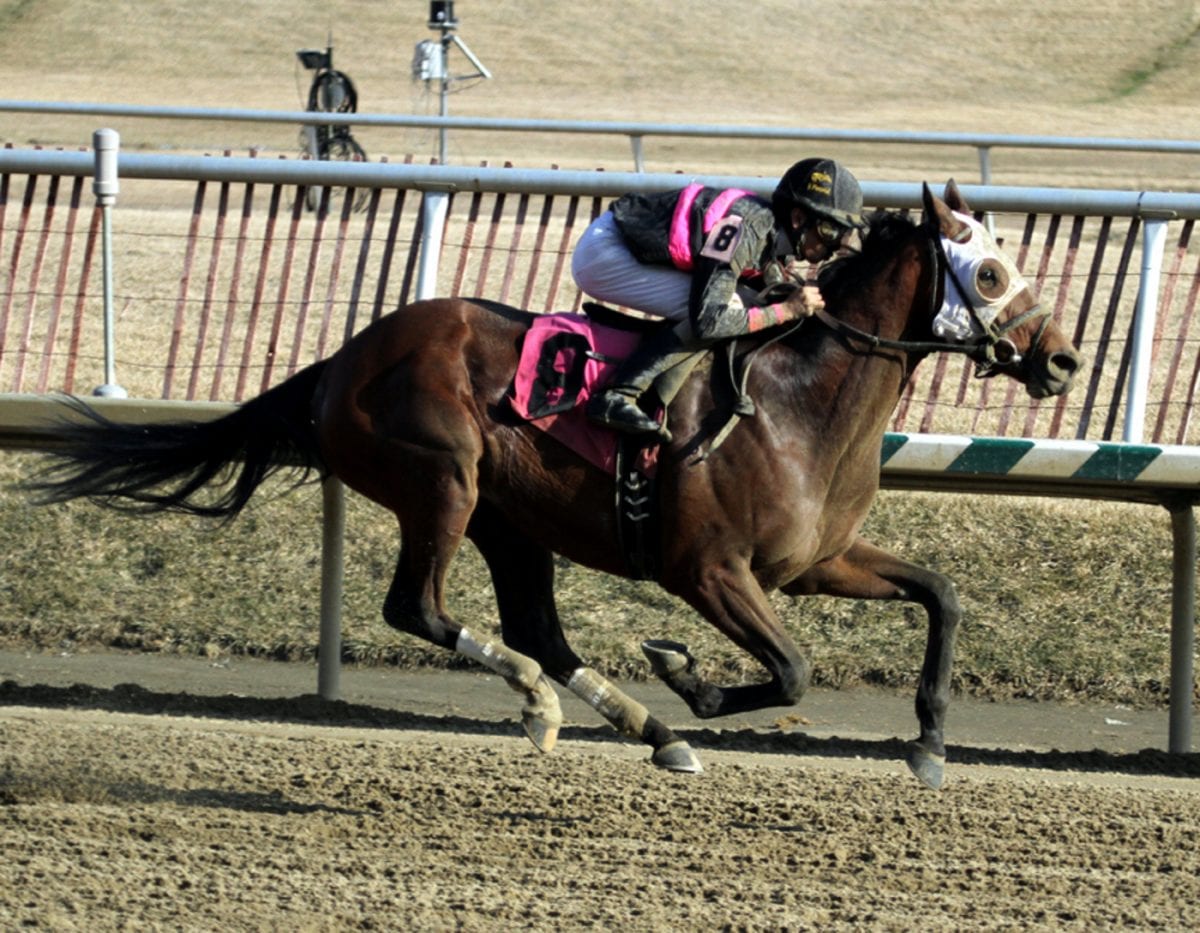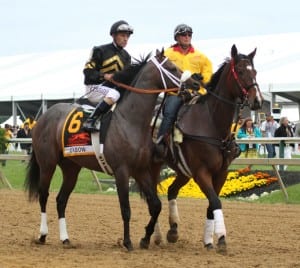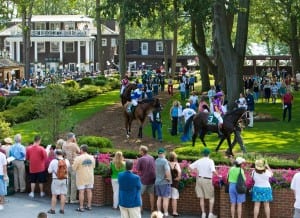by George Rowand
For most Americans horseracing exists on maybe three days a year: Kentucky Derby day, Preakness day, and — if a horse is going for a Triple Crown — the day they run the Belmont Stakes.
The rest of the time, the sport is almost invisible.
So what’s racing to do?
I suggest we send it to college.
Let’s face it: racing could disappear in the future if something isn’t done to make it appealing to new fans.
That the game is not what it used to be is clear. Once, it was the only gambling game in town. Now, of course, there are lottery games galore and casinos everywhere you turn, and racing is losing.
What’s more, handicapping is difficult to learn. Nobody ever wants to appear ignorant about placing a wager, and anybody can see that it is much easier to pull a handle on a slot machine than it is to figure out which horse is going to win a race.
Fewer young people grow up around horses, and fewer go to the races with parents or grandparents. The sport has basically skipped a generation — or three — and may be doomed unless it can get them back.
And that’s where college comes in.
Imagine the excitement of seeing a horse in the colors of dear old alma mater thundering down the stretch to victory — even, if we’re really lucky, wearing the blanket of roses or black-eyed susans.
Here’s how I see it.
A university – preferably one with a vet school with an equine clinic – raises $3 million from alumni and other interested parties. It sounds like a lot, but it’s basically chump change to college and universities, which usually have excellent fundraising machines.
Twenty-five percent of that sum ($750,000) immediately goes to the vet school for academic programs and scholarships. We’ll use the rest of the money to buy and maintain 10 yearling colts with an average price of about $125,000 each. Of course, prices will vary, and with those guidelines, one should be able to buy horses with enough pedigree and conformation that, if they are successful on the track, they should have significant residual value as stallions.
We’ll place the horses with a trainer with a demonstrated ability to win big races and an unquestioned reputation for integrity.
But the most important element is this: the horses will race in the name and colors of the university.
[pullquote]The most important element is this: the horses will race in the name and colors of the university.”[/pullquote]We’ll make big races big campus events.
We’ll offer streaming video of the races, interviews with the trainers and jockeys, and stories about the horses. The horses would be named by the university students, administration or faculty members. Students will design the silks. The idea is to get as many students, their parents and alumni involved with the idea as possible.
The aim for the endeavor is two-fold. First, we want to raise money for academic programs and scholarships. “The Thoroughbred Scholarships” has a nice ring to it, I think.
Second, we want to introduce an entirely new generation to horseracing. Suppose – for example – we were to purchase a yearling that became very successful at 2 and then looked like it might become a Triple Crown candidate. There would be tremendous interest in the colt. As this would be a unique way to raise money for academics, the non-racing press would surely pick up the story.
And if the plan works for one university, in all likelihood it would be picked up by another. If the University of Georgia were to endorse and fund the plan, and they were to race a couple of nice horses, one has to think that the universities of South Carolina, Alabama, Tennessee and Mississippi might want to do the same thing … all of them being eager rivals in the Southeastern Conference.
But will it work?
College sports are extremely popular with students and alumni. Some college stadiums seat 100,000 or more, and good teams are well supported. What’s more, it is not unusual for a fan to spend thousands of dollars to go to a prestigious football bowl game, and that is for three hours of entertainment on one day. Suppose that same fan could be persuaded to spend that same amount to support a “team” that would provide entertainment for two or three years on numerous afternoons.
From the university perspective, it could be a huge win. Whether the horses hit a home run or not, the university receives money it never would have had. There would be numerous opportunities for the university to reconnect to their alumni, which is one thing that all universities desire. And if the horses do succeed, it will generate publicity the university couldn’t have bought and engender all sorts of spirit-building opportunities.
From racing’s perspective, I think this would introduce the sport to a generation of people who may never have seen a race in person, turning the solitary pursuit of gambling opportunities into a “team game.”
And if the horses do succeed — and if the university did well financially — racing might benefit by finding something else it needs more of: owners.










